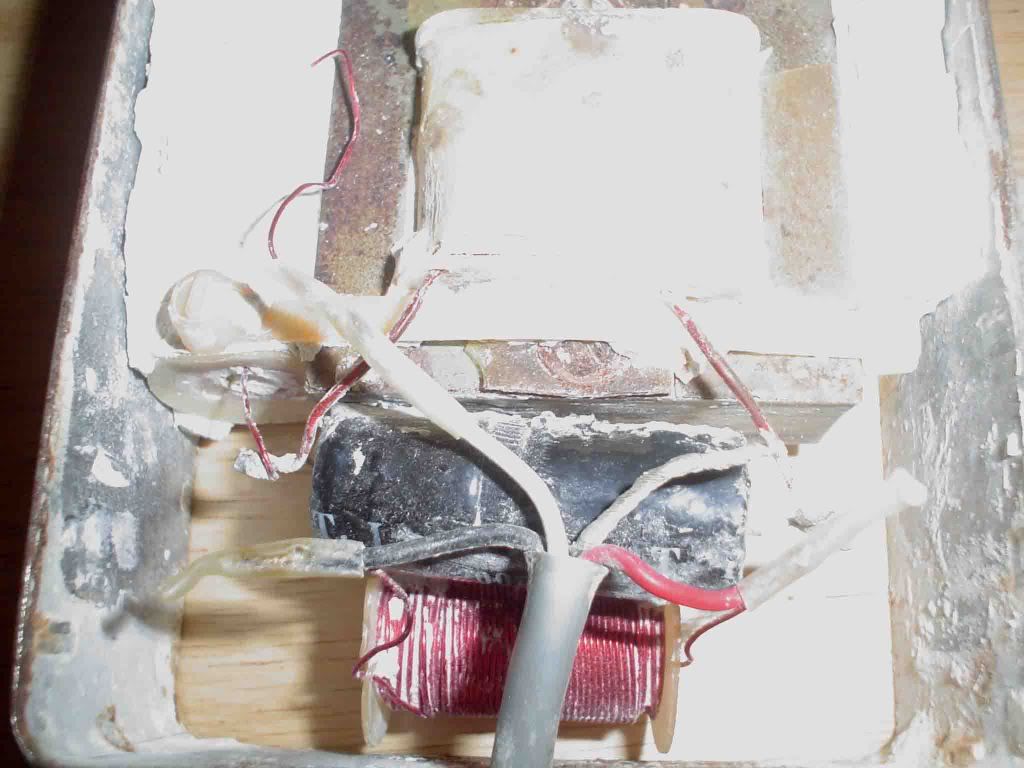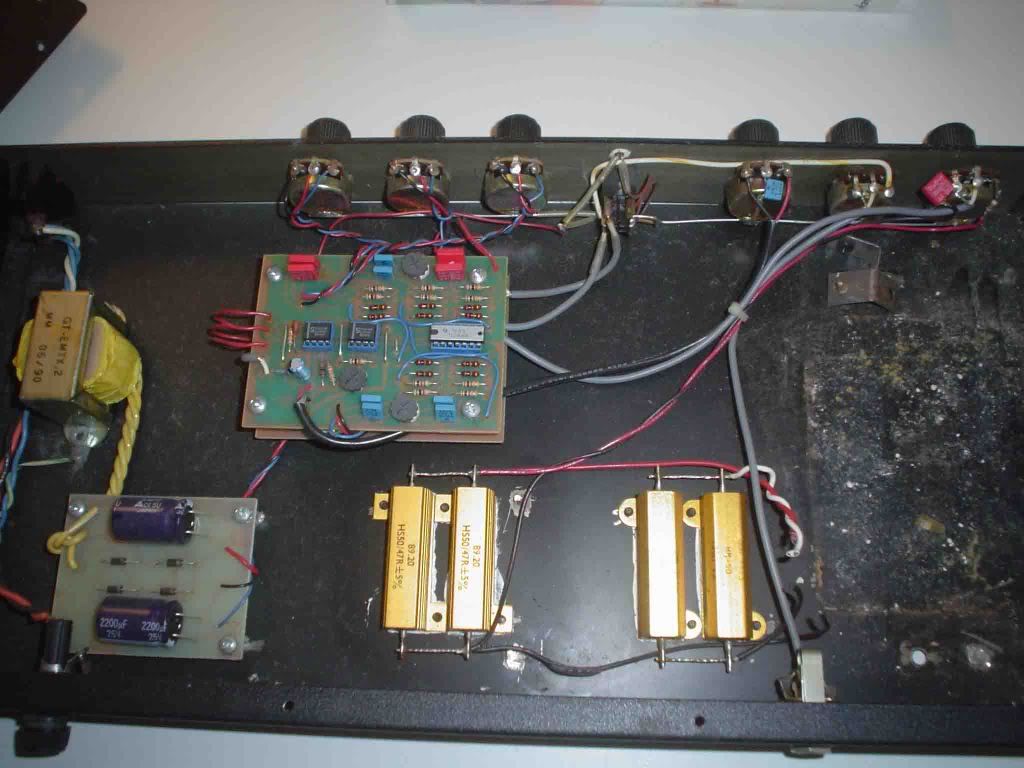volta
Well-known member
- Joined
- Dec 10, 2004
- Messages
- 118
I opened this thing up the other day and found a
box with some drywall looking stuff in it.
Since it's the first link in the chain I had to see
what was in it so I carefully chipped away at it to
reveal three inductors and a cap.The cap was
bubbled up and leaking so that is safe to say it's fried.
The inductors all read about 1 ohm.
Never seen an inductor read that low.
Is this normal or should I assume they are fried as well?


Patentstorm has a link about Q inductor with multiple metallization levels.
It states "In a preferred embodiment of the novel inductor according to
the invention, the stacks are connected in parallel having the first
terminal at the interconnected first ends of the strips and having the second terminal at the interconnected second ends of the strips.
The DC resistance of such an inductor is extremely low (typically <<1 ohm) and its inductance is typical in the range of 1 nH."
Could this maybe be the case with these inductors?
http://www.patentstorm.us/patents/6124624-description.html
box with some drywall looking stuff in it.
Since it's the first link in the chain I had to see
what was in it so I carefully chipped away at it to
reveal three inductors and a cap.The cap was
bubbled up and leaking so that is safe to say it's fried.
The inductors all read about 1 ohm.
Never seen an inductor read that low.
Is this normal or should I assume they are fried as well?


Patentstorm has a link about Q inductor with multiple metallization levels.
It states "In a preferred embodiment of the novel inductor according to
the invention, the stacks are connected in parallel having the first
terminal at the interconnected first ends of the strips and having the second terminal at the interconnected second ends of the strips.
The DC resistance of such an inductor is extremely low (typically <<1 ohm) and its inductance is typical in the range of 1 nH."
Could this maybe be the case with these inductors?
http://www.patentstorm.us/patents/6124624-description.html


